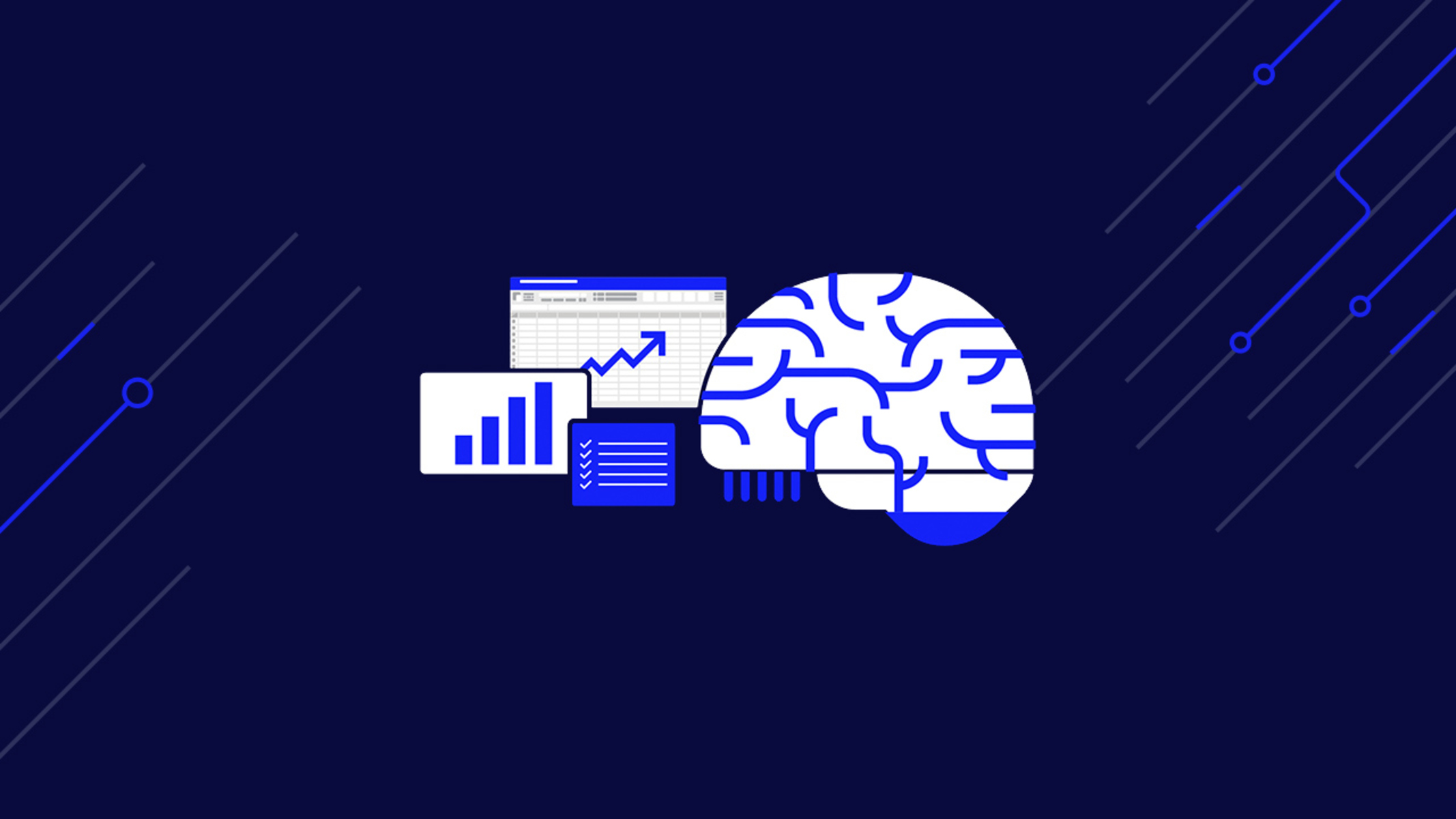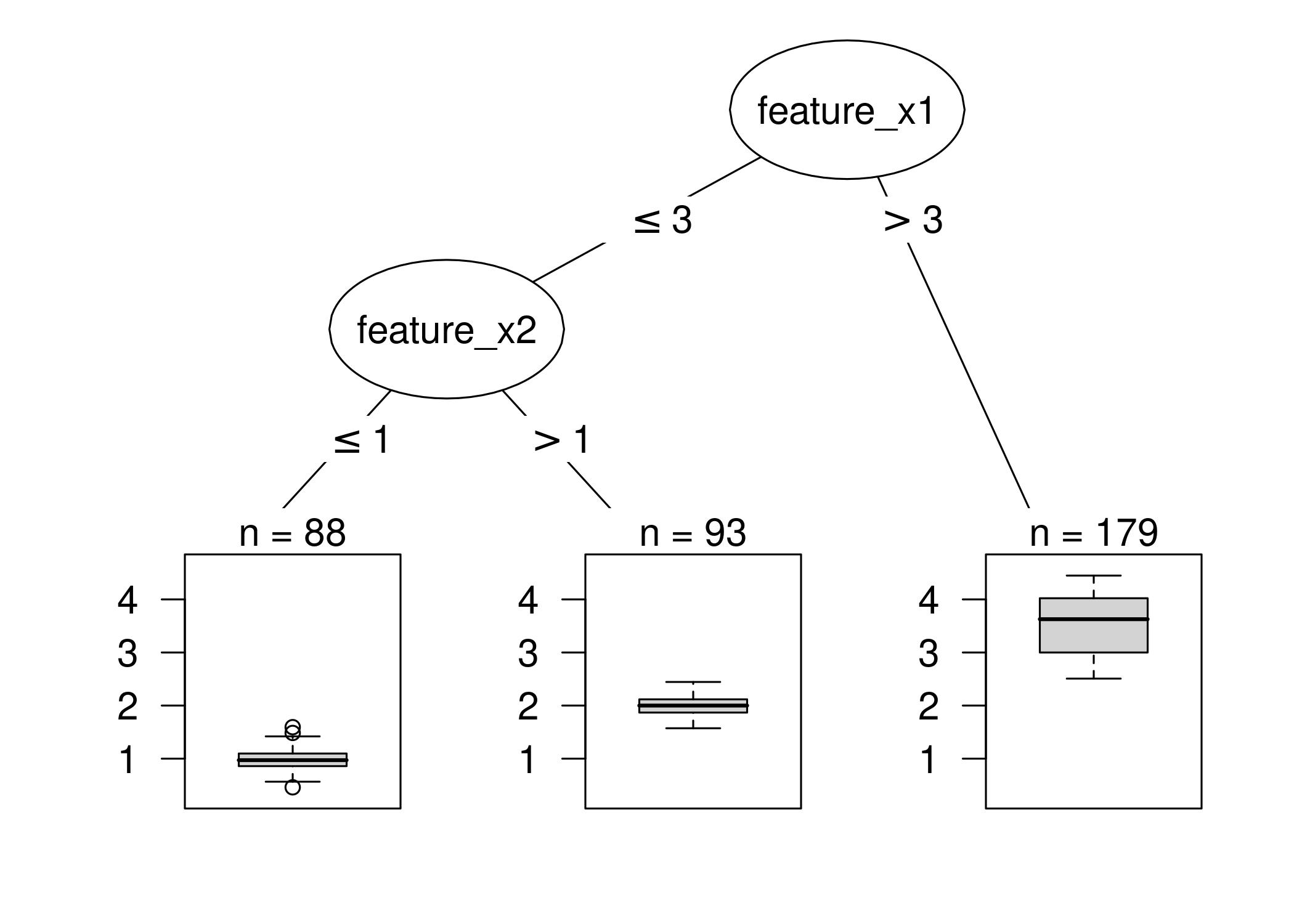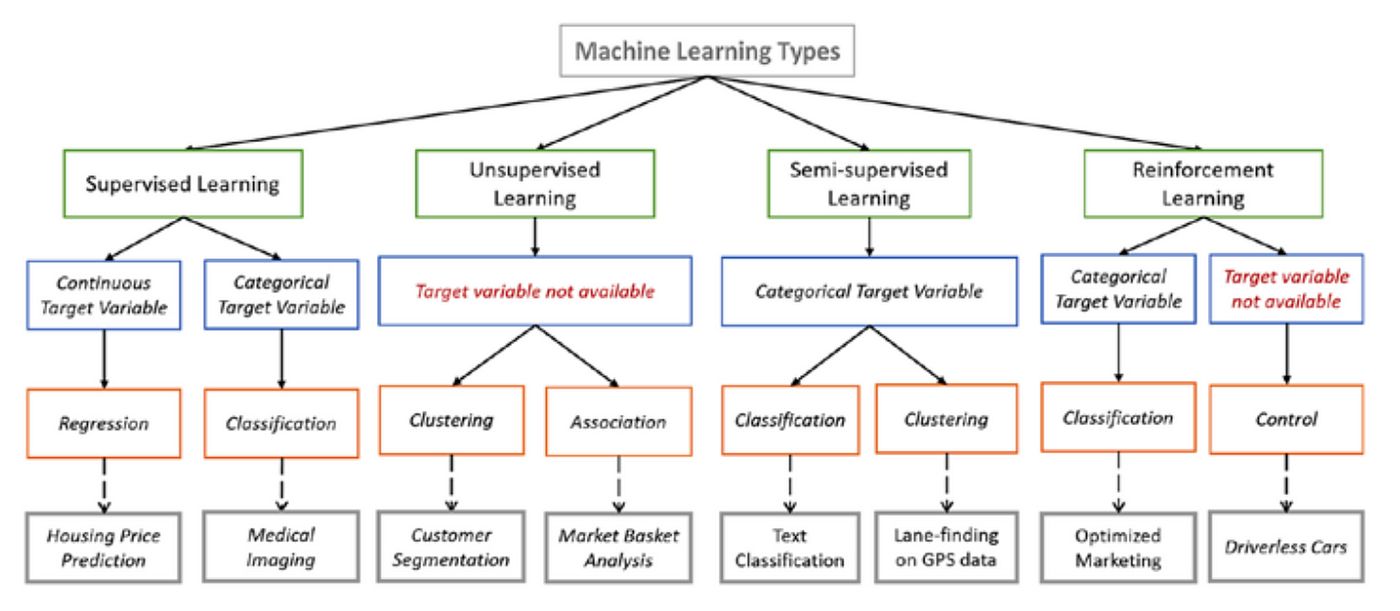Introduction
Machine learning has revolutionized the field of computer science, enabling computers to learn and make predictions without being explicitly programmed. One popular technique in the realm of machine learning is boosting, which has gained significant attention and success in various predictive modeling tasks.
Boosting is a powerful ensemble learning method that combines multiple weak or base learning models to create a more accurate and robust predictive model. It addresses the limitations of individual models by leveraging their collective strength in a sequential manner. This approach has been extensively used in various domains, including data mining, natural language processing, image recognition, and more.
Boosting algorithms have proved to be highly effective in improving the performance of machine learning models. They have been able to achieve outstanding results in diverse applications, such as spam detection, medical diagnosis, fraud detection, and financial forecasting.
In this article, we will explore the concept of boosting in machine learning, discuss how it works, delve into different types of boosting algorithms, and present the advantages and disadvantages of utilizing this approach. We will also provide best practices for implementing boosting algorithms and highlight some of the real-world applications in which boosting has yielded remarkable results.
By the end of this article, you will have a deeper understanding of boosting in machine learning and be equipped with the knowledge to leverage this technique in your own projects.
What is Boosting?
Boosting is a machine learning technique that combines the predictions of multiple weak or base learning models to create a strong model that is capable of making accurate predictions. Unlike other ensemble methods like bagging, where models are trained independently and their predictions are aggregated, boosting algorithms train the models sequentially, with each subsequent model focusing on the errors made by the previous models.
The fundamental principle behind boosting is to convert a set of weak learners into a strong learner. Weak learners are models that perform slightly better than random guessing. By combining the predictions of these weak learners, boosting algorithms iteratively build a more accurate and robust model.
The main idea behind boosting is to give more weight or importance to the observations that are difficult to predict. In each iteration, the boosting algorithm assigns higher weights to the misclassified or poorly predicted examples, forcing subsequent models to focus on these challenging cases. This iterative process continues until a predefined stopping criterion is met, typically when a specified number of models are developed or when the model’s performance plateaus.
Boosting algorithms differ in terms of how they assign weights to misclassified examples and how they adjust these weights in each iteration. Some popular boosting algorithms include AdaBoost (short for Adaptive Boosting), Gradient Boosting, and XGBoost (Extreme Gradient Boosting). These algorithms have specific variations and modifications that enhance their performance and address specific challenges.
By combining the predictions of multiple models, boosting can effectively handle complex and non-linear relationships within the data, making it particularly suitable for tasks like classification and regression. Boosting has become one of the most popular machine learning techniques due to its ability to improve model accuracy, reduce bias and variance, and handle high-dimensional datasets.
Boosting is not without its challenges, as it is prone to overfitting and can be computationally expensive. However, with careful tuning of parameters and regularization techniques, these limitations can be mitigated, making boosting a powerful tool in the arsenal of machine learning practitioners.
How Does Boosting Work?
Boosting works by iteratively training a sequence of weak or base learning models and combining their predictions to create a strong model. The process can be summarized into the following steps:
-
Initialize the weights: Initially, all examples in the training data are assigned equal weights. These weights indicate their relative importance in the training process.
-
Train a weak learner: The first weak learner is trained on the training data using the initial weights. The weak learner aims to minimize the error by fitting a model that predicts the target variable as accurately as possible.
-
Compute the error: The error of the weak learner is calculated by comparing its predictions to the actual target values. The error is typically measured using metrics such as mean squared error for regression or misclassification rate for classification.
-
Assign weights: Higher weights are assigned to the examples that the weak learner failed to predict accurately. This places more emphasis on these examples in the subsequent iterations, encouraging the next weak learner to focus on them.
-
Train the next weak learner: A new weak learner is trained on the training data, but with updated weights. The aim is to minimize the error by focusing on the challenging examples that the previous weak learner struggled with.
-
Combine the weak learners: The predictions of all the weak learners are combined or aggregated to create the final prediction. This aggregation can be done using methods like weighted voting or weighted averaging, depending on the type of problem.
-
Update the weights: The weights of the examples are adjusted again, giving higher importance to the misclassified examples. This ensures that the subsequent weak learners focus on the remaining challenging examples.
-
Repeat the process: Steps 4 to 7 are repeated for a specified number of iterations or until a stopping criterion is met, such as when the error rate doesn’t improve significantly.
As the boosting process continues, subsequent weak learners are trained to focus on the examples that are difficult to predict. The combination of these weak learners through weighted aggregation results in a final prediction that is more accurate and robust than that of a single weak learner.
Importantly, the weights assigned to the examples and the way they are updated in each iteration play a crucial role in boosting. By giving more weight to misclassified examples, the boosting algorithm adapts and learns from the mistakes, with each iteration improving the model’s performance.
Overall, boosting leverages the strengths of multiple weak learners while compensating for their individual weaknesses, ultimately producing a powerful model capable of making accurate predictions.
Types of Boosting Algorithms
Boosting algorithms come in various flavors, each with its own characteristics and methodologies. Here are some commonly used types of boosting algorithms:
-
AdaBoost (Adaptive Boosting): AdaBoost is one of the most well-known and widely used boosting algorithms. It assigns higher weights to misclassified examples, ensuring subsequent models focus on these challenging cases. In each iteration, AdaBoost adjusts the weights to emphasize the examples that the previous models struggled with, effectively improving overall model performance.
-
Gradient Boosting: Gradient Boosting takes a gradient-based optimization approach to iteratively refine the model. It trains weak learners in a sequential manner, where each subsequent learner tries to minimize the loss function by fitting the negative gradient of the loss. Gradient Boosting algorithms, such as XGBoost and LightGBM, have become popular due to their efficiency and ability to handle large-scale datasets.
-
Robust Boosting: Robust Boosting focuses on reducing the impact of outliers and noisy data points during the boosting process. It aims to build a model that is more resilient to these anomalies, ensuring better generalization and improved performance on unseen examples.
-
LogitBoost: LogitBoost is a boosting algorithm specifically designed for binary classification problems. It employs a logistic regression framework and employs a gradient descent-based optimization method to iteratively improve the model’s performance.
-
LPBoost: LPBoost is a boosting algorithm that leverages linear programming techniques to optimize the weights assigned to different examples in each iteration. It formulates the boosting problem as a linear program, ensuring that the weights are updated to minimize the error and encourage the next weak learner to focus on the challenging examples.
-
Adaptive Boosting with Multi-objective Evolutionary Algorithm: This variant of AdaBoost combines the power of evolutionary algorithms with boosting. It employs multi-objective optimization to simultaneously optimize the weights and select relevant features, producing a more optimal and robust model.
These are just a few examples of the wide range of boosting algorithms available. Each algorithm has its specific strengths and weaknesses, and the choice of algorithm may depend on factors such as the nature of the problem, the size of the dataset, computational resources, and desired performance metrics.
It’s important to experiment with different boosting algorithms and evaluate their performance on your specific task to determine which one suits your needs best.
Advantages of Boosting
Boosting offers several advantages that make it a popular and highly effective technique in machine learning:
-
Improved Model Accuracy: Boosting has the ability to significantly improve the accuracy of predictive models. By combining the predictions of multiple weak learners, boosting is able to leverage their collective strengths and mitigate their individual weaknesses. This results in a final model that performs better than any single weak learner.
-
Handles Complex Relationships: Boosting is capable of capturing complex and non-linear relationships in the data. Through the sequential training process, boosting algorithms can learn from the mistakes made by previous models and focus on the challenging examples. This allows them to effectively handle intricate data patterns and make accurate predictions.
-
Reduces Bias and Variance: Boosting strikes a balance between bias and variance, two important factors in machine learning. By combining multiple models with different biases, boosting reduces bias in the final model. Additionally, by sequentially adjusting weights and focusing on challenging examples, boosting also reduces variance, leading to a more robust model.
-
Handles High-Dimensional Data: Boosting exhibits strong performance even with high-dimensional datasets. It automatically selects relevant features and assigns higher weights to them during the training process, effectively handling feature selection and reducing the curse of dimensionality.
-
Flexible and versatile: Boosting algorithms are highly flexible and can be adapted to different types of machine learning tasks, including classification, regression, and ranking. They can also be combined with other techniques, such as bagging or random forests, to further enhance model performance.
-
Interpretable Outputs: Boosting algorithms often provide interpretable outputs, allowing users to understand the important features and factors driving the predictions. This makes it easier to explain the model’s decisions and gain insights into the underlying data patterns.
These advantages highlight the effectiveness and versatility of boosting algorithms in improving model accuracy, handling complex data patterns, and reducing bias and variance. By leveraging the strengths of multiple weak learners, boosting offers a powerful framework to tackle a wide range of machine learning problems.
Disadvantages of Boosting
While boosting algorithms offer numerous advantages, there are also several limitations and challenges associated with their use:
-
Prone to Overfitting: If not properly regularized, boosting algorithms can be prone to overfitting the training data. The iterative nature of boosting may cause the model to become too complex and excessively fit the noise or outliers in the data, leading to poor generalization on unseen examples.
-
Computationally Expensive: Boosting involves training multiple weak learners in a sequential manner, which can be computationally expensive, particularly for large datasets. The training process may be time-consuming and may require significant computational resources.
-
Sensitivity to Noisy Data: Boosting algorithms give more weight to misclassified examples, which can be problematic if there are noisy or erroneous labels in the training data. These noisy examples can mislead the boosting algorithm and negatively impact the model’s performance.
-
Difficulty in Tuning Hyperparameters: Boosting algorithms have various hyperparameters that need to be tuned properly to achieve optimal performance. These hyperparameters include the number of weak learners, learning rate, regularization parameters, and more. Finding the optimal combination of hyperparameters can be a challenging and time-consuming task.
-
Sensitive to Outliers: Like other machine learning algorithms, boosting can be sensitive to outliers. If there are outliers in the training data, they may have a significant influence on the training process, leading to models that are less robust and accurate.
-
Black Box Nature: Some boosting algorithms, especially those with complex structures, can be difficult to interpret. The final model may act as a black box, making it challenging to understand the underlying factors driving its predictions.
Understanding these limitations is crucial to using boosting algorithms effectively. Proper regularization, hyperparameter tuning, and careful preprocessing of the data can help mitigate these challenges and improve the performance of boosting models.
Best Practices for Implementing Boosting
Implementing boosting algorithms effectively requires attention to certain best practices to ensure optimal performance and successful model outcomes. Here are some key best practices to consider:
-
Data Preparation: Preprocessing and cleaning the data play a crucial role in the success of any machine learning algorithm, including boosting. It is essential to handle missing values, outliers, and categorical variables appropriately. Additionally, feature scaling and normalization can help ensure that the boosting algorithm converges efficiently.
-
Feature Engineering: Creating informative and relevant features can enhance the performance of boosting models. Domain knowledge and creativity in engineering meaningful features can provide the algorithm with more valuable information to make accurate predictions. Feature selection techniques can also be applied to reduce noise and improve model generalization.
-
Regularization: Regularization techniques, such as limiting the depth or complexity of weak learners, can help prevent overfitting. Regularization parameters, such as learning rate and shrinkage, should be tuned carefully to strike the right balance between model complexity and performance.
-
Hyperparameter Tuning: Boosting algorithms have several hyperparameters that need to be tuned for optimal performance. A thorough search and evaluation of different hyperparameter combinations using techniques like grid search or randomized search can help in finding the best set of hyperparameters for the problem at hand.
-
Ensemble Size: Determining the appropriate number of weak learners or the ensemble size is crucial. Adding too many weak learners may lead to overfitting, while too few may result in underfitting. Cross-validation techniques can be employed to determine the optimal number of iterations or weak learners.
-
Model Evaluation: Proper evaluation and validation of the boosting model are essential. Accuracy metrics, such as precision, recall, F1-score, or mean squared error, should be used to assess the model’s performance. It is important to evaluate the model on both the training and test datasets to ensure proper generalization and avoid over-optimization.
-
Monitor for Early Stopping: Boosting algorithms may continue to improve model performance with each iteration, but there is a point of diminishing returns. Monitoring the performance and tracking the learning curve can help determine when to stop the boosting process and prevent overfitting.
-
Ensemble Diversification: To enhance the diversity of weak learners, different algorithms or setups can be used in the ensemble. This can help ensure that the ensemble is not biased towards a particular type of weak learner, thereby improving overall model performance.
By following these best practices, you can optimize the implementation of boosting algorithms and maximize their effectiveness in your machine learning projects.
Applications of Boosting in Machine Learning
Boosting algorithms have demonstrated their effectiveness across a wide range of machine learning tasks and have been successfully applied in various domains. Here are some notable applications where boosting has been leveraged:
-
Image and Object Recognition: Boosting algorithms have been extensively used in image and object recognition tasks. They have been employed to detect and classify objects in images, improve facial recognition systems, and enhance image segmentation algorithms. Boosting algorithms’ ability to handle complex patterns and non-linear relationships makes them well-suited for image-related tasks.
-
Natural Language Processing: Boosting has been applied in several natural language processing (NLP) tasks. It has helped improve sentiment analysis, text classification, and spam detection systems. Boosting algorithms excel in capturing subtle linguistic nuances and extracting meaningful features from textual data.
-
Recommendation Systems: Boosting algorithms have been deployed in recommendation systems to improve personalized recommendations and enhance user experiences. They have been used to predict user preferences based on historical data, optimize click-through rates, and provide personalized product or content recommendations.
-
Fraud Detection and Anomaly Detection: Boosting algorithms have shown significant success in detecting fraudulent activities and anomalies in various industries. They have been employed to identify credit card fraud, detect network intrusion, and flag suspicious transactions in financial systems.
-
Medical Diagnosis: Boosting algorithms have been applied in medical diagnosis and disease prediction tasks. They have been used to analyze patient data, identify disease risk factors, and support clinical decision-making. Boosting’s ability to handle high-dimensional data and capture complex relationships makes it valuable in the healthcare domain.
-
Customer Churn Prediction: Boosting has been widely used in customer churn prediction, helping businesses identify customers who are likely to leave or cancel their services. Boosting algorithms can leverage customer behavioral data, purchase history, and demographic information to predict and mitigate churn, allowing businesses to take proactive measures to retain valuable customers.
These are just a few examples of the diverse applications where boosting algorithms have been employed. Boosting’s ability to improve model accuracy, handle complex data patterns, and mitigate bias and variance make it applicable across numerous domains and machine learning tasks.
Conclusion
Boosting is a powerful ensemble learning technique that has revolutionized the field of machine learning. By combining the predictions of multiple weak or base learning models, boosting algorithms create a strong model that exhibits improved accuracy, handles complex relationships, and reduces bias and variance.
In this article, we explored the concept of boosting in machine learning, discussed how it works, and delved into various types of boosting algorithms. We also highlighted the advantages, such as improved model accuracy and flexibility, as well as the disadvantages, such as potential overfitting and sensitivity to outliers, of using boosting algorithms.
To implement boosting effectively, we discussed best practices such as data preparation, feature engineering, regularization, and hyperparameter tuning. These practices help in optimizing model performance and generalization. Additionally, we explored some real-world applications where boosting has been successfully applied, including image recognition, natural language processing, fraud detection, and medical diagnosis.
Boosting algorithms continue to be a popular choice in machine learning due to their ability to enhance model accuracy, handle complex data patterns, and provide valuable insights. However, it is important to carefully consider the specific requirements of the problem at hand and address the challenges and limitations associated with boosting algorithms.
With the right implementation and careful consideration of best practices, boosting can be a powerful tool to improve model performance and make accurate predictions in a variety of domains. As machine learning continues to advance, boosting algorithms will undoubtedly play a significant role in driving innovation and pushing the boundaries of predictive analytics.

























